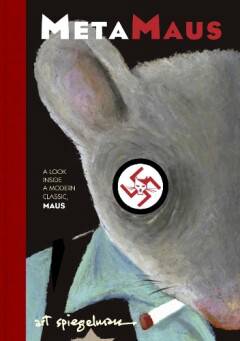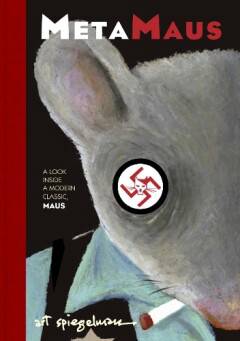
- Afhalen na 1 uur in een winkel met voorraad
- Gratis thuislevering in België vanaf € 30
- Ruim aanbod met 7 miljoen producten
- Afhalen na 1 uur in een winkel met voorraad
- Gratis thuislevering in België vanaf € 30
- Ruim aanbod met 7 miljoen producten
Zoeken
Prijzen
Omschrijving
'Spiegelman has turned the exuberant fantasy of comics inside out by giving us the most incredible fantasy in comics' history: something that actually occurred. MAUS is terrifying not for its brutality, but for its tenderness and guilt' New Yorker
MAUS is widely renowned as one of the greatest pieces of art and literature ever written about the Holocaust. It is adored by readers and studied in colleges and universities all over the world. But what led Art Spiegelman to tell his father's story in the first place? Why did he choose to depict the Jews as mice? How could a comic book confront the terror and brutality of the worst atrocity of the twentieth century?
To celebrate the 25th anniversary of the book's first publication, MetaMAUS, prepared by the author, is a vital companion to the classic text and includes never-before-seen sketches, rough and alternate drafts, family and reference photos, notebook and diary entries and the transcript of his interviews with his father Vladek as well as a long interview with Art, in which he discusses the book's extraordinary history and origins.
Art Spiegelman is a contributing editor and artist for the New Yorker. His drawings and prints have been exhibited in museums and galleries around the world. He won the Pulitzer Prize for MAUS, and a Guggenheim fellowship. It was also nominated for the National Book Critics Award. He lives in New York with his French wife and two children.
MAUS is widely renowned as one of the greatest pieces of art and literature ever written about the Holocaust. It is adored by readers and studied in colleges and universities all over the world. But what led Art Spiegelman to tell his father's story in the first place? Why did he choose to depict the Jews as mice? How could a comic book confront the terror and brutality of the worst atrocity of the twentieth century?
To celebrate the 25th anniversary of the book's first publication, MetaMAUS, prepared by the author, is a vital companion to the classic text and includes never-before-seen sketches, rough and alternate drafts, family and reference photos, notebook and diary entries and the transcript of his interviews with his father Vladek as well as a long interview with Art, in which he discusses the book's extraordinary history and origins.
Art Spiegelman is a contributing editor and artist for the New Yorker. His drawings and prints have been exhibited in museums and galleries around the world. He won the Pulitzer Prize for MAUS, and a Guggenheim fellowship. It was also nominated for the National Book Critics Award. He lives in New York with his French wife and two children.
Specificaties
Betrokkenen
- Auteur(s):
- Uitgeverij:
Inhoud
- Aantal bladzijden:
- 296
- Taal:
- Engels
- Geïllustreerd:
- Ja
Eigenschappen
- Productcode (EAN):
- 9780670916832
- Verschijningsdatum:
- 20/10/2011
- Uitvoering:
- Hardcover
- Afmetingen:
- 168 mm x 236 mm
- Gewicht:
- 868 g

Alleen bij Standaard Boekhandel
+ 73 punten op je klantenkaart van Standaard Boekhandel
Beoordelingen
We publiceren alleen reviews die voldoen aan de voorwaarden voor reviews. Bekijk onze voorwaarden voor reviews.










